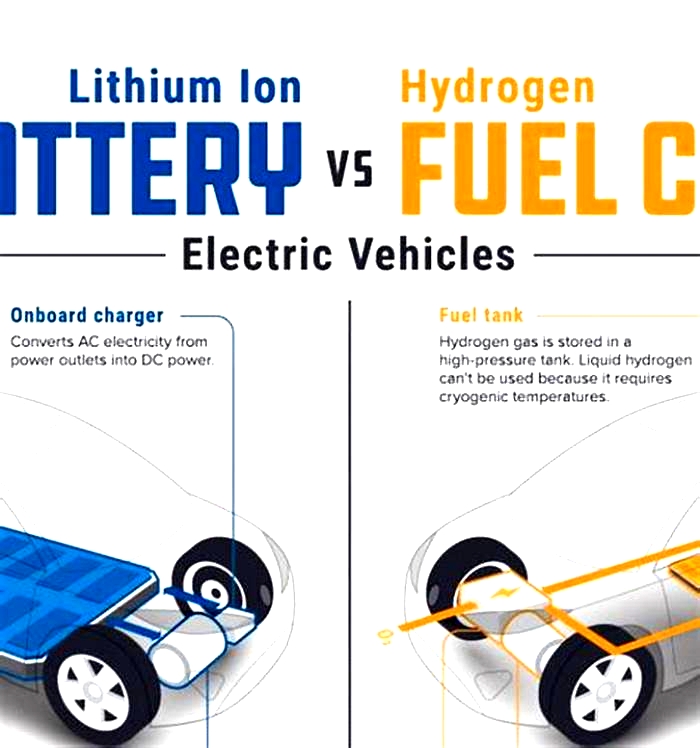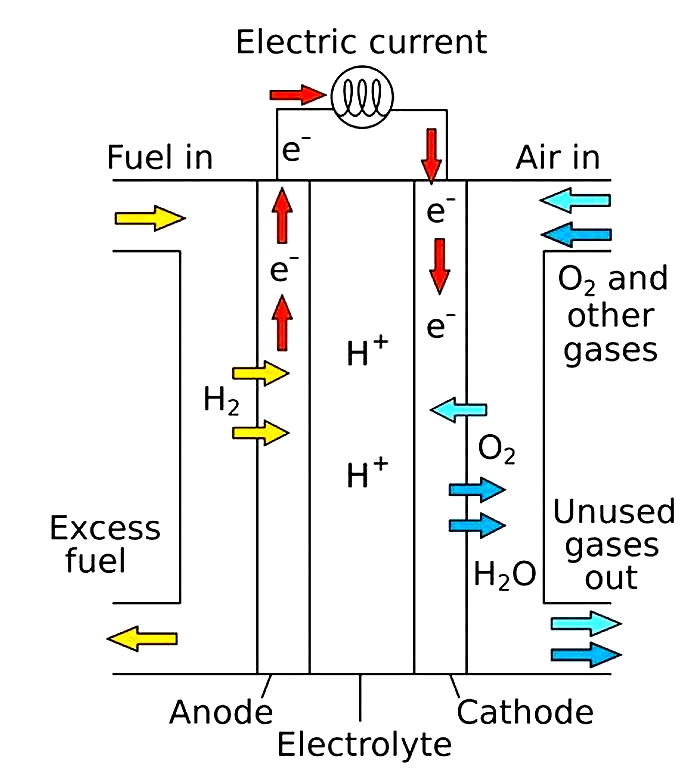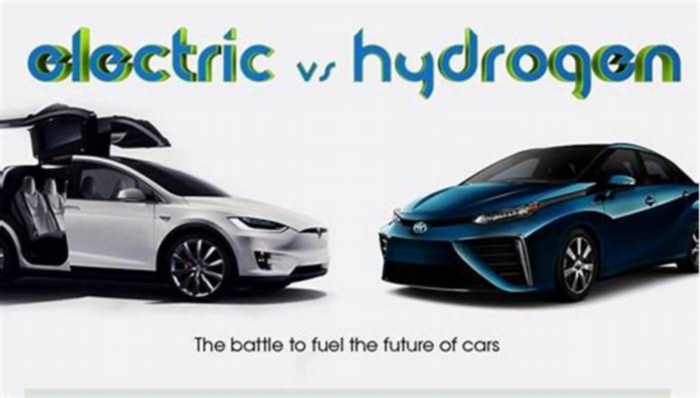Is hydrogen the next big thing

Follow Us
Many experts believe hydrogen holds great promise as a clean energy resource that can help nations achieve carbon-free goals. Green hydrogen, which is made from water through electrolysis powered by renewable energy, could be used to decarbonize a wide range of hard-to-abate industries, including petrochemical, cement, and steel, which often require high temperatures and combustion that cannot be achieved with standard wind and solar power. Hydrogen can also be used in mobility applications and as an energy storage medium, among other things, so the future looks very bright for this up-and-coming energy sector.
Looking at this large, growing market; the projects that we see emerging so fastly; the transport and the pipeline tasks in front of usthe infrastructure; and the industry use sectors just starting to be developed, it looks like we are all climbing the Himalaya and we have just left the base camp, but we are very motivated to go further, Dr. Hans Dieter Hermes, vice president Clean Hydrogen with Worley, said as a guest on The POWER Podcast.
Hermes is very excited about the hydrogen market. Worley, an engineering company headquartered in Australia with a worldwide team of about 48,000 consultants, engineers, construction workers, and data scientists, is currently implementing more than 120 hydrogen projects worldwide, he said. While that number may seem large from a historical perspective, the growth in hydrogen projects required to decarbonize even a few of the sectors mentioned above is mind-boggling.
For example, Hermes, who is based in Berlin, said if Germanys heavy-truck fleet were to be powered from hydrogen instead of fossil fuels, the country would need to ramp up todays production of hydrogen by a factor of 100. And Im not talking about buses, not talking about trains, not even talking about fertilizer industry, chemical industry, or steel, or heating the houses, just only the heavy-truck fleet, he said. As another example, Hermes pointed to household heating. To supply all German households with hydrogen heating fuel, existing production would need to be increased by a factor of 830. This gives us an idea of the size of the task that is in front of us, he said.
While many companies are investing in green hydrogen technology, high production costs currently pose a barrier to widespread adoption. Today, most hydrogen is produced from natural gas, which is typically considered grey hydrogen, or blue hydrogen when carbon capture technology is utilized. For green hydrogen production costs to come down, facilities will need an accessible and abundant renewable energy supply, and, perhaps even more importantly, further advancement and scale-up of electrolyzer technology.
Still, Hermes expects that to happen fairly quickly based on cost curves observed in other developing power sectors. Specifically, he pointed to the offshore wind industry as an example. He said 10 or 20 years ago, every offshore foundation was a pilot project and costs were very high. Nowadays, the industry is very mature and costs have come down dramatically. I expect that the same will happen with the hydrogen sector. We already see a very steep cost reduction, he said. Cost reductions to date have come by integrating lessons learned from earlier projects and also through new developments that have been triggered by a growing market demand.
Today, it generally takes more than 50 kWh to produce 1 kilogram of hydrogen using an electrolyzer. Hermes said that in the last few years costs have come down from a starting point of about 10/kilogram of hydrogen in certain situations in northern European countries to some projects today producing hydrogen for 2/kilogram. This is promising and its not the end of the curve, he said.
In a few years, we might see electrolyzers that use 20% less energy to produce the same amount of hydrogen. This is the same that has happened and has been experienced in other sectors and it will happen here, said Hermes. This has a huge effect on the whole energy demand that you need to produce hydrogen, and this again has a huge effect on the cost basis, and the cost will come down by that.
Looking ahead to 2050, Hermes sees several boosts and barriers along the way. On the positive side, I could already mention technology development, the market development, and cooperation, he said. On the barrier side, the regulatory frameworks, and the infrastructure, and how to get finance into that sector.
Hermes suggested hydrogen technology development is being accelerated due to higher demand. He indicated that some startup companies are collaborating and building off of each other with research being done on new types of electrolyzers. Significant improvements in performance and energy efficiency have been witnessed in advanced plants. We see innovation along the entire value chain, and I see this definitely as a boost for the whole market and the sector, he said.
Concerning markets for hydrogen, Hermes said theres a high demand by off-takers from all sectors. This is a nice example of good cooperation between government and industry, he said, suggesting government strategies to promote hydrogen usage has triggered large corporations in the steel and chemical industries to increase demand. This also causes then a massive clean hydrogen supply from emerging markets, because we know that Europe is blessed with industry and infrastructure, but not with sun and wind, said Hermes. That means that there [are] new players coming into these markets that have these conditions that are needed to produce hydrogen. So, green hydrogen production in the future will be based on offshore wind, for example, in Northern Europe and Northern Americathat makes very much sense to do thatand based on solar and onshore wind, for example, in the Mediterranean, Middle East, North Africa, and Africa region, and Australia, he said.
The third element that Hermes finds promising is the cooperation taking place between industries to advance new technology. He mentioned a consortium called Liquid Wind that includes Worley, Alfa Laval, Carbon Clean, Haldor Topsoe, and Siemens Energy. Worley is providing basic engineering services for Liquid Winds first project in northern Sweden, which will be one of the worlds first commercial-scale eMethanol facilities. Worley and its consortium partners intend to design a standardized and modular facility concept that can be efficiently replicated and assembled for subsequent projects. Liquid Wind plans to establish 500 eMethanol facilities by 2050. That is a cooperation between different technology partners, Hermes said, noting that the aviation industry is also involved, as it intends to utilize the green fuel produced.

On our homework list, there is the regulatory framework, Hermes said. We will need to see activities to enhance market pricing for carbon and also to have more emission limits. And for those countries where the electricity is mainly connected to a large electricity grid, which is the U.S., Europe, and Asia, we need to remove levies and taxes on green electricity to not make the electricity that goes into the electrolyzer too expensive, because that will cause an expensive final price for hydrogen products.
Hermes said implementing more trade facilitation instruments is also important. He noted that many large companies are financing projects today using their own money. However, rolling out the number of facilities needed to decarbonize the world will require banks and other institutions to finance projects.
At present, medium-sized developers cant get the money necessary to begin projects because they cannot predict a hydrogen price. Therefore, Hermes said it will be important to have trading platforms in which governments can guarantee off-take prices for a certain amount of time so that developers can make the necessary calculations and get the loans or funding credits they need to move forward.
The government support would not be permanent because the financing is there, Hermes said. We all know this. Everyone is going towards ESG financing, which is environmental, social, governance, and every private person willing to invest money is asking their bank if this is also a green investment or could I have something more sustainable? And the whole finance sector is turning towards that, which means the financing amount is there. Its just the regulatory frameworks and the infrastructure for that needs to be designed in a way that project financing can happen.
To hear the full interview, which includes additional discussion about water requirements, desalination strategies, countries leading the way in hydrogen research and development, other industries partnering to advance hydrogen technology, additional projects Worley is collaborating on, safety aspects of the new hydrogen economy, and more, listen toThe POWER Podcast. Click on the SoundCloud player below to listen in your browser now or use the following links to reach the show page on your favorite podcast platform:
For more power podcasts, visitThe POWER Podcast archives.
Aaron Larson is POWERs executive editor (@AaronL_Power, @POWERmagazine).
Hydrogen: The Next Big Investment Trend?
Hydrogen is at the forefront of science and sustainability and could be the next big thing for climate protection and the economy. The two-week UN climate change conference in Scotland recently came to an end with commitments to reduce pollution and reach net zero emissions targets in the years to come.
Hydrogen could help achieve those goals. Not only in terms of powering cars, but also as an alternative energy source. Hydrogen is invisible, odourless, non-toxic, lighter than air and abundant on the planet. Its also found in a wide variety of chemical compounds and substances, e.g. oil, gas, biofuels, sewage sludge and even water.
Is the hydrogen boom coming?
According to the World Energy Council (WEC) analysis, at least 20 countries have already adopted a national hydrogen strategy, or are about to do so.
Big economic powers like Japan, Russia, China, France, South Korea, Spain and Portugal are also considering a strategy. Research and development are underway and that could trigger a boom for many companies.
Hydrogen producers
The beauty of hydrogen is that it is versatile. It can be converted into fuel, synthetic natural gas or used directly to generate electricity. Companies that produce hydrogen and related producers could be among the first to benefit if car companies decide to build hydrogen-power vehicles. Hydrogen companies that could benefit include Air Products & Chemicals, Air Liquide and Linde.
Electrolysers and fuel cells
Fuel cells are a real challenge when it comes to hydrogen. Not only is hydrogen difficult to handle, but it can also be dangerous, which is why fuel cells have to be particularly safe. Companies that produce these safely could benefit from high demand in the future. These are companies like Cummins, Bloom Energy, Ballard and Plug Power.
Another major player could join the competition in 2022. According to Bloomberg, the German company ThyssenKrupp wants to spin off its electrolysis unit and go public. The unit, called Uhde Chlorine Engineers, alongside a joint venture with Italian company De Nora, is helping to build hydrogen production plants.
Hydrogen in cars
Fuel cells can also be built into cars, allowing them to run on hydrogen. This could unlock new innovation because theres potential to get a longer range than battery-powered electric cars. Toyota and Hyundai already have hydrogen fuel cell vehicles on the market. Mercedes has run a pilot test and there are further models in the works. So keep an eye on stocks like Ford, Toyota, Volkswagen, Daimler and BMW.
Pipeline company
Of course, the hydrogen also has to be transported from A to B. This is another careful process because hydrogen is flammable when combined with oxygen. Above a certain ratio, the mixture can be explosive. Experts believe that hydrogen is less dangerous than other car fuels, but caution is still required. Companies that transport hydrogen are, for example, Enbridge, Kinder Morgan, TC Energy and Williams Companies.
Suppliers
As we mentioned, hydrogen is not just used for cars and fuel cells, but also for energy production. This is particularly interesting when it comes to climate protection because fossil fuels and natural gas could be largely replaced by hydrogen. Companies like NextEra Energy are researching this possibility.
Nobody knows yet whether hydrogen will really be the next big thing. But we already know that many companies and countries are working on it, some of them very successfully. It will be interesting to keep your eye on this sector closely.
All views, opinions, and analyses in this article should not be read as personal investment advice and individual investors should make their own decisions or seek independent advice. This article has not been prepared in accordance with legal requirements designed to promote the independence of investment research and is considered a marketing communication.









